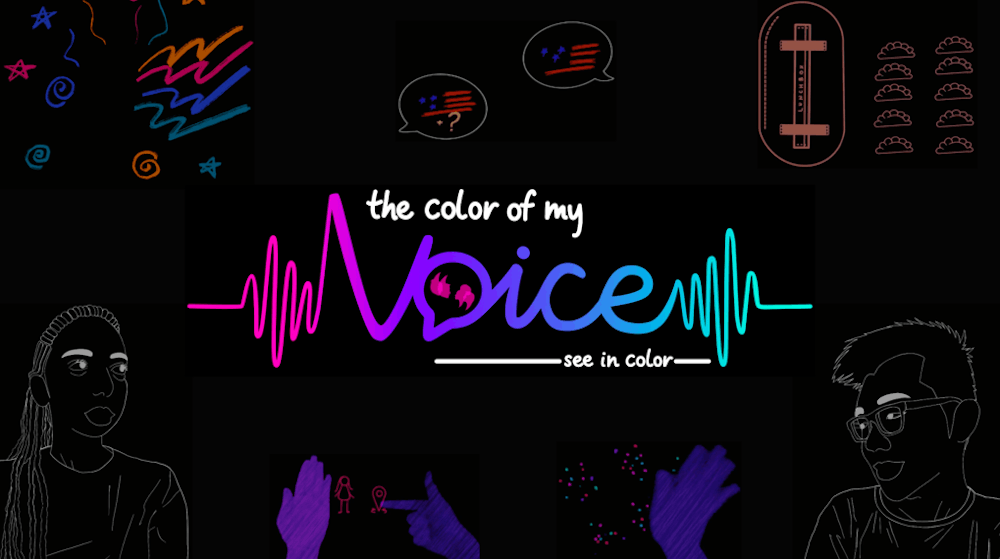Color of My Voice (CMV) is a student-run arts project that creates animated videos to share the stories of underrepresented individuals. The organization’s goal is to provide an outlet for those who have faced racial discrimination to talk and heal from their experiences.
CMV was started by Keidaï Lee after the Black Lives Matter and Stop Asian Hate movements of 2020. Lee is a Hopkins alum who recently graduated with a major in Philosophy and a minor in Computer Science.
In an interview with The News-Letter, Lee described why he thinks CMV’s work is different from other work in the entertainment industry.
“A lot of organizations that are in entertainment are driven more to simply entertain,“ he said. “There’s been some progress in wanting to create nuance and characters that go beyond just their identity, but there hasn’t been a heavy focus on that specifically. A lot of racial justice organizations focus on preventing racism or racial discrimination from happening, but few focus on recovery, and that’s what we try to do.”
CMV’s videos use a combination of animation and hand choreography to tell the stories. Against a black background, brightly colored hands gesticulate and interact with smoothly animated neon drawings while someone gives a voice-over. The artistic style is bright, playful and, when combined with a calmly delivered voice-over and uplifting music, creates a safe and informative atmosphere.
The organization’s decision to exclude faces and use bright colors for the skin tones in their videos was very intentional.
“We took away our storytellers' faces so you could more easily hear their voice, and hopefully you get a second chance to see them more clearly,” the group wrote on their website.
The process of creating these animated videos involves several steps. The group begins by having conversations with the storytellers to get to know them, and they work on the script and research the culture and context relevant to the story. Next, they do voice-over recordings and start adding visuals to the script. Afterwards, the hand choreography is added, and animators get to work on bringing the visuals to life.
CMV has told the stories of people from different backgrounds and portrays the many ways that discrimination can manifest. One story focused on a Nigerian-British student struggling with deciding between respecting authority or respecting herself. Another story dealt with a student facing discrimination at school over bringing food from his culture to lunch. An upcoming video tells the story of a student deciding to wear a traditional dress, a salwar kameez, to her school in rural Georgia, despite the risk of it affecting her friendships.
Though many of its volunteers are Hopkins students, the CMV team is made up of students and alumni from several universities all working together to create these videos.
CMV’s Operations and Research Officer Amy de Lury described how she has contributed to the project’s success in an email to The News-Letter.
“Being in CMV empowers me in recovery and the fight against racial discrimination through evidence-based art,“ she wrote. “I most enjoy working with CMV in ensuring long-term sustainability for them through partnerships with other antiracist organizations, nonprofits and social enterprises.”
CMV has recently become one of the first video-production-based ventures to join the Spark accelerator track at the University’s student entrepreneurship program, FastForward U. Lee highlighted how FastForward U has helped CMV and provided him with a supportive community.
“A lot of CMV started with creative people with big dreams, but it’s also [necessary] to set realistic pathways for it that complement the bounds of our imagination, so it’s been good to have a scheduled track like this program to keeps us going,“ he said. “Having a community has been really helpful because I’m a first-generation college student. It’s been really good to have people who know what they’re doing to back me up.”
Sophia Lin is an Arts & Entertainment Editor for The News-Letter. She did not contribute to the reporting, writing or editing of this article.





